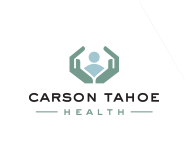Dr. Stephen Tann, interventional cardiologist at Carson Tahoe Health, spoke with Reno Gazette-Journal writer, Maggie O’Neil, about the various symptoms women may have during a heart attack. Read the full story below…
Women and men can experience different symptoms when it comes to heart attacks, but any chest pain lasting longer than 30 minutes should be taken seriously by both sexes, said Dr. Stephen Tann, an interventional cardiologist at Carson Tahoe Cardiology.
However, there are some studies that suggest subtle differences in heart attack symptoms exist between the sexes, with those experienced by women sometimes described as “atypical” particularly when compared with the symptoms experienced by men.
“Women are less likely to have the classic heart attack symptoms of crushing substernal (under the sternum) chest pain with associated shortness of breath, nausea, sweating, with radiation of the pain to the jaw or left arm than are their male counterparts,” Tann said. “Symptoms in women having a heart attack are more likely to be atypical.”
A study done out of the McGill University Health Center in Montreal and published in 2013 in JAMA Internal Medicine supports this conclusion, suggesting 1 in 5 women age 55 and younger may not experience any chest pain at all while having a heart attack, and it may be time for the healthcare professionals to consider different assessments for women, and younger, individuals.
The atypical heart attack symptoms that may be seen in women consist of lightheadedness or dizziness, nausea or vomiting, right arm pain, shortness of breath, sweating, unusual fatigue, and neck, jaw, shoulder, upper back or abdominal discomfort, Tann said.
“Women experiencing these types of symptoms, or the more classic symptoms of crushing substernal chest pain with radiation to the neck or left arm, should take them seriously particularly if they have risk factors for heart disease,” he said.
When it comes to heart disease, which can have an end result of a heart attack, risk factors are similar for both males and females, Tann said. Factors encompass age, diabetes, high blood pressure, high cholesterol, smoking and a family history of heart attack. That said, non-traditional factors further impacting a woman’s risk of heart attack include the level of inflammatory markers in the blood, mental stress and depression, and low estrogen.
Perhaps more vexing, is a 2013 study in the International Journal of Cardiology showed more women than men have early mortality after suffering a heart attack, potentially as a result of an incorrect diagnosis of symptoms.
“The prevailing thought is that women are less likely to have heart disease than their male counterparts,” he said. “Combine this with the fact that women’s symptoms of heart disease are often less recognized, and it (has been) found that women (are) less likely to receive early/aggressive treatment for heart attacks than men.
“This translates to more women dying due to lack of early recognition and aggressive treatment. But again, this trend has markedly improved over the last decade with improved awareness, for example, from the Red Dress Campaign,” Tann said.
Not everyone experiencing chest pain and headed to the emergency room will be suffering from a heart attack, but it’s exactly because some people may have no heart attack signs or symptoms at all, that they are so worrisome.







